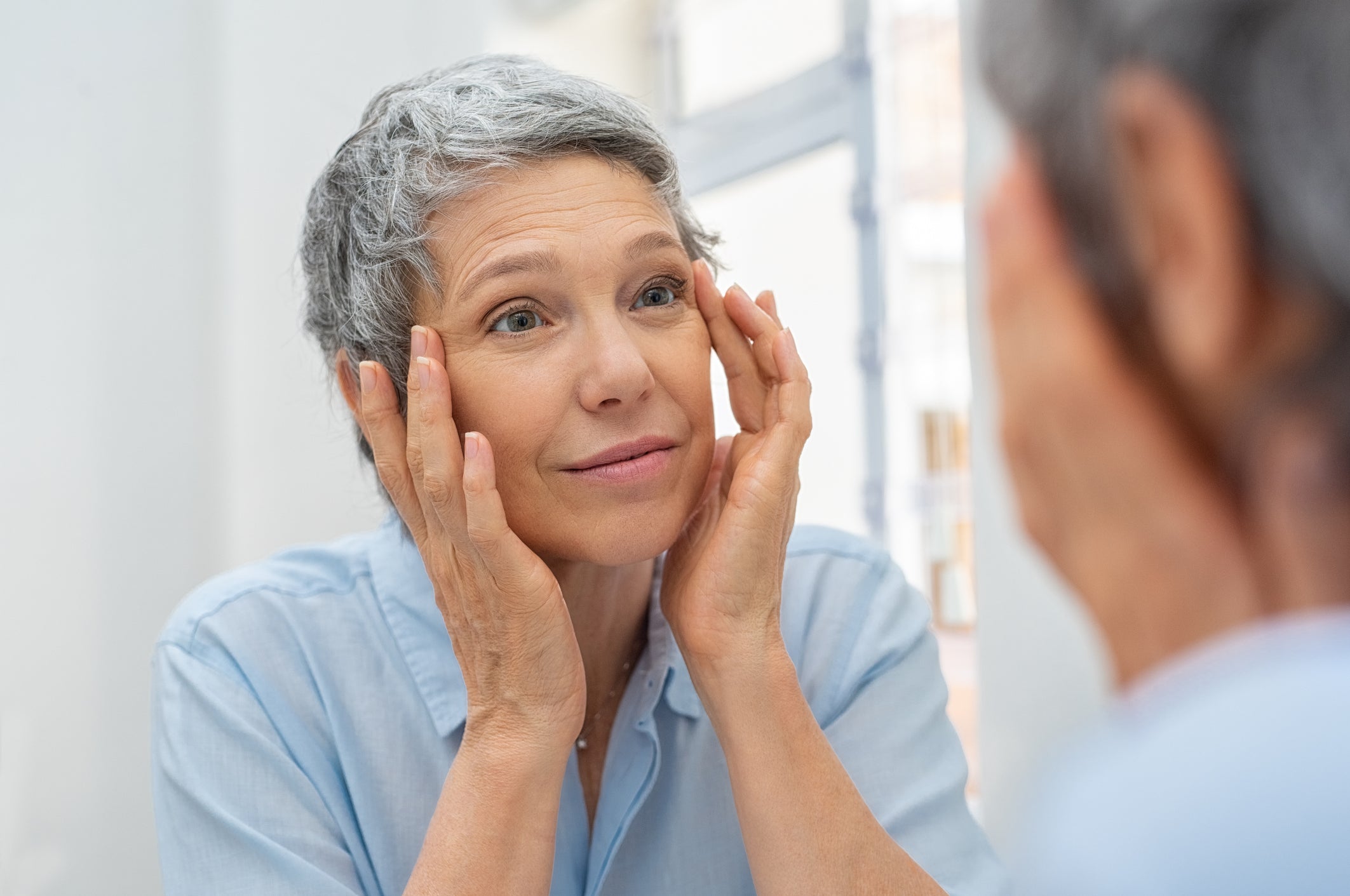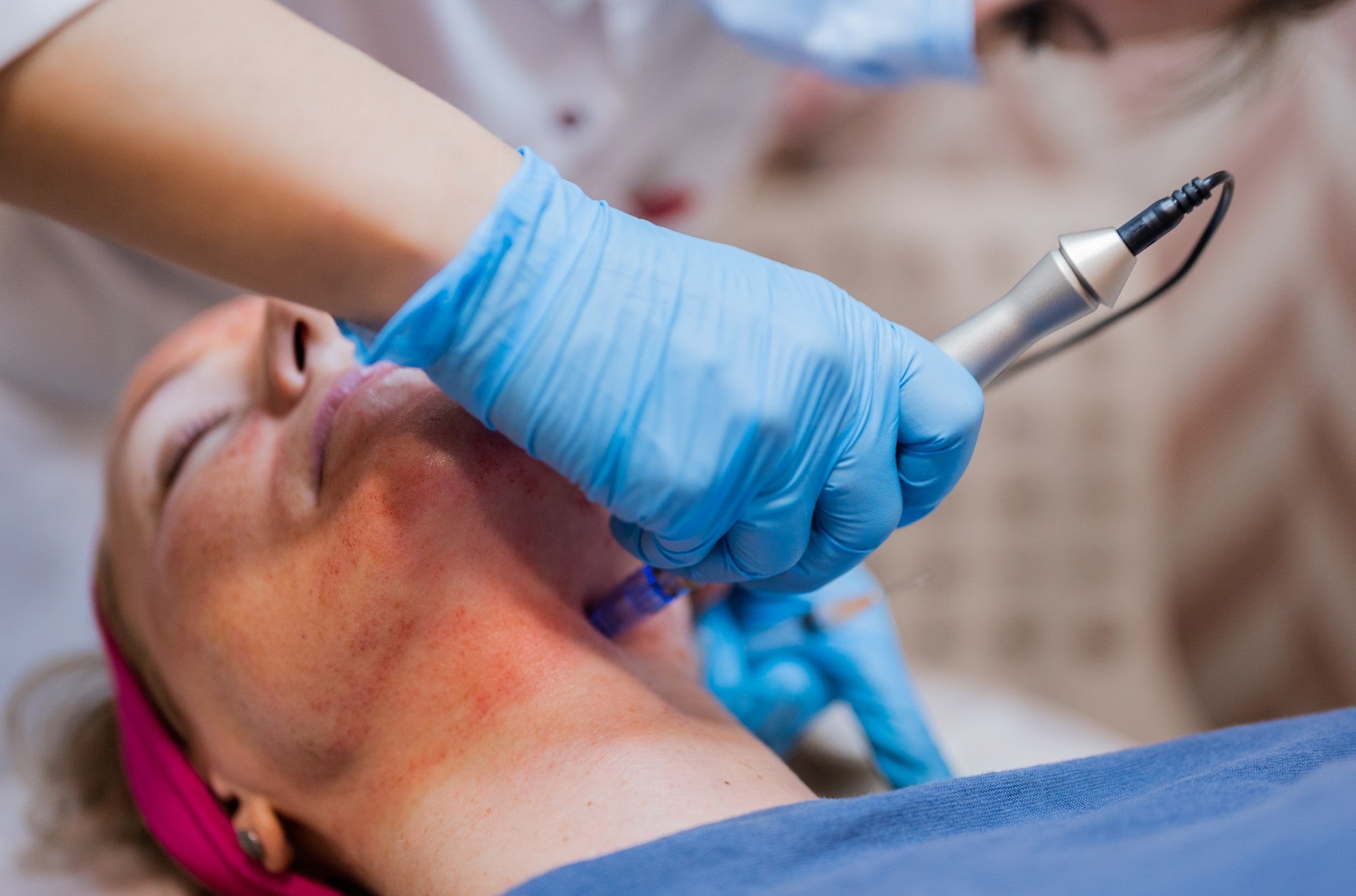The neverending search for flawless-looking skin has led to exploring many ways it can be achieved. One such method is to harbor the properties of different light wavelengths. As we know, there are different layers of skin, namely, epidermis (top), dermis (middle), and hypodermis (bottom).
Collagen protein, aka the building block of the skin, is present in the dermis. With age, collagen production may reduce, leading to inescapable signs of aging. Different light wavelengths may help to combat mild fine lines and wrinkles due to photoaging.
The wavelength variation allows the light to penetrate deep into the dermal layers, triggering collagen and elastin in the skin. As a result, the skin looks rejuvenated and vibrant with fewer fine lines and age spots. Keep reading to learn more about the science behind the action of various light wavelengths.
Understanding Different Wavelengths for Skincare
Different light wavelengths imply the penetration power these lights have into our skin. Each one targets different functions due to their wavelengths. With the help of LED (light-emitting diodes), one can benefit from this non-invasive treatment that penetrates the skin’s layers for rejuvenation.

Different wavelength lights may target various skin issues such as fine lines, wrinkles, eczema, psoriasis, acne, and scars. Over time, using a mask or a wand with LED lights may improve skin texture and appearance.
Here are different light wavelengths and their applications:
Red (620 to 750 nanometers)
Red light is considered the most effective in triggering collagen production in the skin. It penetrates deep into the dermis. Furthermore, it reduces inflammation and redness in the skin, making it appear younger and firm. Besides collagen synthesis, it’s believed to reduce healing time, promoting quicker wound healing.
Blue (450 and 495 nanometers)
Blue light works on the uppermost layer of your skin. It may kill the acne-causing bacteria present on the surface of the skin, preventing breakouts. Blue light may also reduce inflammation in the skin while preventing other skin infections. It may also work on diminishing mild acne spots.
Near-Infrared (800 to 2,500 nanometers)
Near infrared has the ability to reach inside the mitochondria of every cell. Some receptors respond to the Near Infrared wavelengths. As a result, these cells experience a rise in metabolism, protein synthesis, such as collagen and ATP. Moreover, near-infrared may improve antioxidant activity and tightness in the cells leading to detoxification.
Yellow (570–580 nanometers)
The yellow light may help if you have dull skin. It works on wounds and helps them heal faster. Moreover, it may improve blood circulation to the skin tissues, reducing dullness and adding a plumping effect to the skin. Yellow light is excellent for overall skin rejuvenation.
Scientific Evidence Behind the Treatments
It makes sense to delve into the science before trying a new facial rejuvenation treatment. With the rise in the use of at-home beauty devices, learning about efficacy and safety is of utmost importance. You may employ this knowledge to improve your skin with a non-invasive treatment that works.
Experts have reviewed more than 37 clinical trials involving the efficacy of light therapy. After carefully reviewing the results, they recommend using low-power diodes for acne, psoriasis, wrinkles, and fine lines.

In a clinical trial, 136 volunteers were given random light treatments with wavelengths including 611–650 or 570–850 nm polychromatic light. The data was then collected at baseline and after 30 sessions, including blinded evaluations of clinical photography and ultrasonographic collagen density measurements. Another criterion was to check the computerized digital profilometry and an assessment of patient satisfaction.
The volunteers saw an improvement in their skin texture and complexion. Furthermore, the blind evaluation of photos proved a significant improvement in the skin. Hence, it was concluded light therapy has the ability to increase intradermal collagen.
Using red light and energizing light technology on the skin may lead to rejuvenation and improvements in skin feeling and complexion. Moreover, it proves to be a safe, non-heating, and not invasive skin treatment for those who wish to have anti-aging rejuvenation.
In another double-blinded trial, 52 adult female participants were subjected to Low-level light therapy (LLLT). The anti-wrinkle treatment was done with light wavelengths of 660 nm-emitting red LEDs and 411 to 777 nm-emitting white LEDs. After twelve weeks, the red LED therapy showed significant improvement in the wrinkle appearance compared to white LEDs.
With plenty of scientific evidence, LED therapy may be among the most effective in combating several issues at the same time. One multipurpose way to use LED therapy is to combine two or more light treatments to get all the benefits. The simultaneous impact of their wavelengths will improve your skin texture while reducing aging signs.
Using LED Face Therapy
As we learned about the efficacy of LED masks, the truth is they’ll be only effective if you wear them correctly and consistently. Besides, the manufacturing quality of the mask will determine its efficacy and safe use.
EvenSkyn® Mirage: Pro LED Phototherapy Face Mask is an excellent choice for premium skin treatment at home. The mask has 204 units of powerful Light Emitting Diodes (LEDs).

It comes with built-in eye protection to prevent any strain on the eyes. Moreover, with its ergonomic fit, you can wear it hassle-free and relax. Its LCD remote control makes it easier to choose from three different lights. In addition, the remote control also works as a power bank so the mask can operate for longer durations.
It’s not only non-invasive but also does not emit any heat. So for the entirety of the use, your skin will be comfortable under the mask. You may benefit from red, blue, and yellow light wavelengths. Use it thrice a week for 20-25 minutes to notice a change after four weeks.
To use the mask:
- Wash your skin and pat dry.
- Wear the mask snugly by adjusting the straps.
- Adjust the colors and intensity of the LED and relax for the next 25 minutes.
- After the session, use your usual skin care products.
- Don’t forget to clean the mask after use to prevent any bacteria from growing.
Within four weeks, you may revive your skin from dull to glowing. If you have photoaged skin, this mask may repair it with the help of photobiomodulation. Red light is great for collagen synthesis, blue for acne reduction, and yellow for complete skin rejuvenation.
How Safe Are LED Masks?
International standard-approved LED masks do not emit heat to the skin; hence, they are safe for everyday use. Since low light is used to emit from the LEDs, the treatment is safe for all skin colors and types. Moreover, masks with adjustable straps and eye protection are better. On the other hand, a mask without eye protection may lead to headaches and eye strain. So, it’s better to invest in a premium quality mask.
Apart from this, using the mask per your requirements and skin conditions is the best way to get the desired results. Lastly, if you have active inflammation like acne or psoriasis, you may consult a professional before using the treatment. LED therapy may lead to consistent skin rejuvenation when used alongside other treatments.
Wrapping Up
Age, genetics, dietary and lifestyle habits may be precursors in determining your skin’s health and aging. However, using effective skin care products and therapies, you may repair your skin.
Using different light wavelength therapy consistently may aid in reducing aging signs, dullness, and texture on your skin. You may get all these benefits without going under the knife and a long recovery period. Just wear the mask thrice a week and notice your skin improving over time.
References:
- Marc Cohen, Evan Austin. “Home-based devices in dermatology: a systematic review of safety and efficacy” 2022
- Braz. Dent. “Effect of Low-Level Laser Therapy (λ660 nm) on Angiogenesis in Wound Healing” 2013
- Aleksandra Cios, Martyna Ciepielak. “Effect of Different Wavelengths of Laser Irradiation on the Skin Cells” 2021
- David M. Reilly, Jennifer Lozano. “Skin collagen through the life stages: importance for skin health and beauty” 2020
- Alexander Wunsch, Karsten Matuschka. “A Controlled Trial to Determine the Efficacy of Red and Near-Infrared Light Treatment in Patient Satisfaction, Reduction of Fine Lines, Wrinkles, Skin Roughness, and Intradermal Collagen Density Increase” 2014
- Magdalena Sadowska, Joanna Narbutt, and Aleksandra Lesiak. “Blue Light in Dermatology” 2021
- Pinar Avci, Asheesh Gupta. “Low-level laser (light) therapy (LLLT) in skin: stimulating, healing, restoring” 2023
- Seong-Woo Choi, Chung-Hyeok Kim. “A Study on the Photobiological Safety of LED Masks” 2021










Leave a comment
All comments are moderated before being published.
This site is protected by hCaptcha and the hCaptcha Privacy Policy and Terms of Service apply.